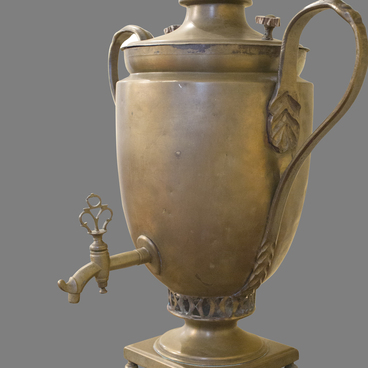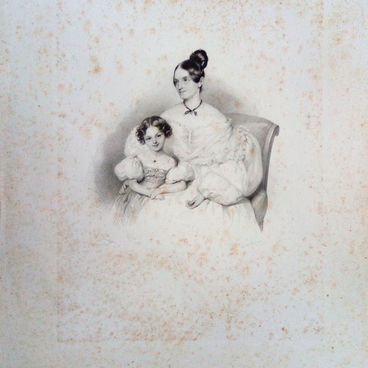The first exhibits were transferred to the Votkinsk Museum in September 1939 from the State House-Museum of Pyotr Tchaikovsky in Klin. Among them was a grand piano of the German company ‘Wirth’, displayed in the museum.
The wooden case of the instrument is finished with noble brown veneer. The strings are stretched over a cast-iron frame, strengthened inside the body with wooden pins. The inner side of the lid features a floral ornament, in the center of which an inscription ‘Wirth’ is stamped — the name of the factory. The sides of the body, framing the keyboard, are decorated with carvings on both sides. The case is mounted on three chiseled legs with metal wheels. This grand piano belongs to the class of salon instruments in terms of body length and sound quality; it has a wide range of timbre, duration, and expressiveness of sound.
On the inside, one can see an inscription in French: ‘Tchaikovsky, November 1852’. After the Tchaikovsky family moved from Alapayevsk to St. Petersburg, this instrument was bought for Pyotr’s musical studies. The grand piano stood in Tchaikovsky’s St. Petersburg apartment for a long time. After the composer’s death, his brother Modest began collecting objects and documents related to Pyotr’s life and work. At the beginning of the 20th century, the era of revolutionary unrest, Modest relocated the most expensive things of his brother to Moscow, to the fireproof rooms of publisher Pyotr Jurgenson. In 1915, he sent his brother’s piano to the Moscow Conservatory.
Soon the grand piano was transported from Moscow to Klin, and in 1939, on the eve of the 100th anniversary of the composer’s birth, the instrument was moved to the museum in Tchaikovsky’s small homeland — to the city of Votkinsk. In 2006, during restoration works on the grand piano, three more inscriptions were discovered, which were not previously known. Two of them are related to its purchase and renovation. And the third, most likely, was left by one of Tchaikovsky’s younger brothers: on the reverse side of the soundboard, an inscription ‘Pyotr is fool’ was made by a child’s hand.
Nowadays, only famous performers, laureates of the Tchaikovsky Competition, and participants of the music festival “In the Homeland of P. I. Tchaikovsky” can play the Tchaikovsky’s grand piano.
The wooden case of the instrument is finished with noble brown veneer. The strings are stretched over a cast-iron frame, strengthened inside the body with wooden pins. The inner side of the lid features a floral ornament, in the center of which an inscription ‘Wirth’ is stamped — the name of the factory. The sides of the body, framing the keyboard, are decorated with carvings on both sides. The case is mounted on three chiseled legs with metal wheels. This grand piano belongs to the class of salon instruments in terms of body length and sound quality; it has a wide range of timbre, duration, and expressiveness of sound.
On the inside, one can see an inscription in French: ‘Tchaikovsky, November 1852’. After the Tchaikovsky family moved from Alapayevsk to St. Petersburg, this instrument was bought for Pyotr’s musical studies. The grand piano stood in Tchaikovsky’s St. Petersburg apartment for a long time. After the composer’s death, his brother Modest began collecting objects and documents related to Pyotr’s life and work. At the beginning of the 20th century, the era of revolutionary unrest, Modest relocated the most expensive things of his brother to Moscow, to the fireproof rooms of publisher Pyotr Jurgenson. In 1915, he sent his brother’s piano to the Moscow Conservatory.
Soon the grand piano was transported from Moscow to Klin, and in 1939, on the eve of the 100th anniversary of the composer’s birth, the instrument was moved to the museum in Tchaikovsky’s small homeland — to the city of Votkinsk. In 2006, during restoration works on the grand piano, three more inscriptions were discovered, which were not previously known. Two of them are related to its purchase and renovation. And the third, most likely, was left by one of Tchaikovsky’s younger brothers: on the reverse side of the soundboard, an inscription ‘Pyotr is fool’ was made by a child’s hand.
Nowadays, only famous performers, laureates of the Tchaikovsky Competition, and participants of the music festival “In the Homeland of P. I. Tchaikovsky” can play the Tchaikovsky’s grand piano.



